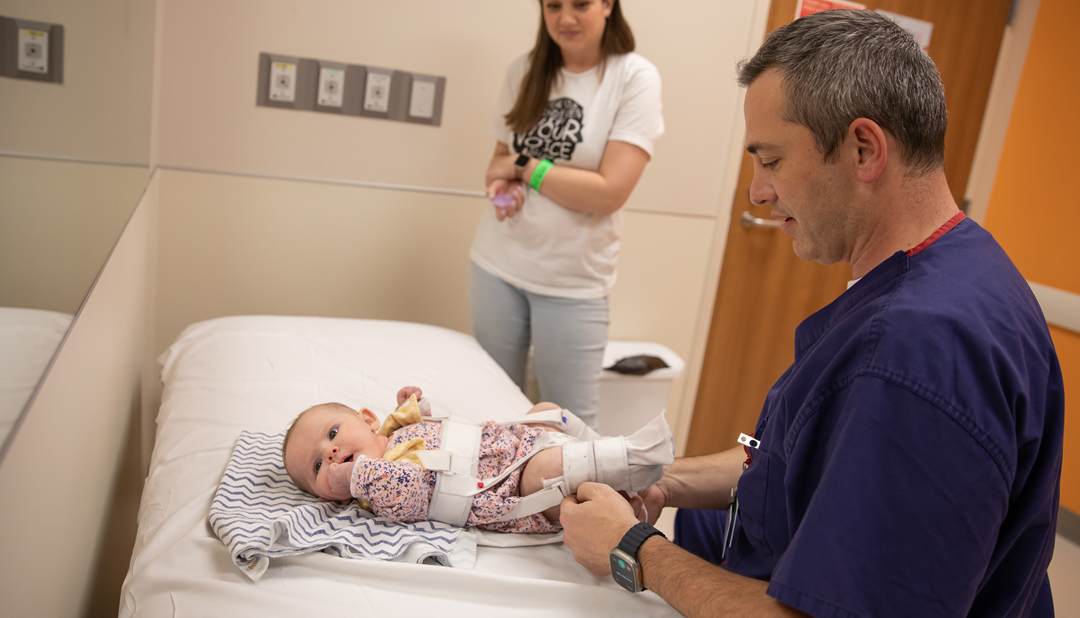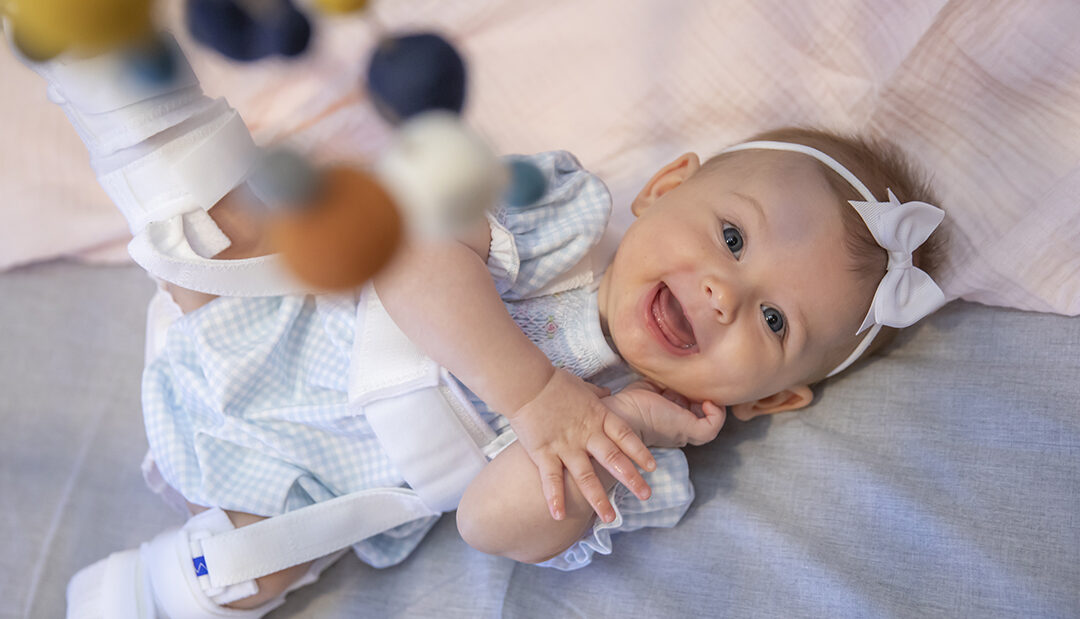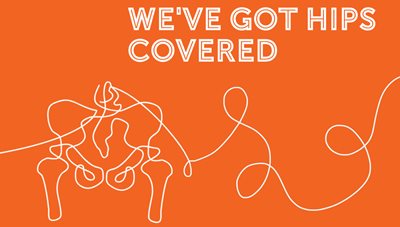
Recognizing Developmental Dysplasia of the Hip in Your Baby
Developmental dysplasia of the hip (DDH) occurs when a baby’s hip joint doesn’t form properly. In most cases, the problem is present at birth, but DDH can also develop as a child grows. It’s essential for parents to know the signs of DDH. The earlier a specialist treats the condition, the better a child’s chances of appropriate development and living without hip problems later in life. DDH occurs in about one in 100 infants.
Defining DDH
The hip is a ball-and-socket joint. The ball, called the femoral head, sits at the upper end of the thighbone and fits snugly into a socket in the large pelvis bone. This ball moves around but always stays inside the hip socket, allowing the hip to move backward, forward and side-to-side while supporting body weight.
When a child has DDH, the ball is not fully covered in the socket or the socket is shallow, which can easily lead to a dislocated hip. Or the hip may already be dislocated or completely or partially out of the socket. Without treatment, the hip joint will not grow properly. As a child gets older, he or she might have pain when walking or develop arthritis at a young age.
Babies at Higher Risk of DDH
While any baby can have DDH, the risk is higher in babies who:
- Are female
- Are the first-born child
- Have a family history of DDH
- Were born in the breech position (buttocks first instead of head first)
In rare cases, babies can develop DDH after birth. For example, swaddling a baby with the legs straight and tight together can increase the risk of DDH. To help prevent this, talk to your provider about how to use sleep sacks and how to swaddle your infant correctly.
“There’s a lot of importance in how we take care of our babies’ hips after they’re born,” said hip specialist and pediatric orthopedic surgeon William Z. Morris, M.D. “Swaddling the legs in a forced extension can cause the hips to develop incorrectly. The ball and the socket are almost like moldable pieces of clay when you are young, so letting the hips and legs move into a flexed and separated position helps keep the ball tucked up in the socket and makes the socket deeper and the ball rounder.”
When swaddling your baby, focus on wrapping the arms and upper torso only, allowing the hips and legs to move without constriction.
Know the Signs
Babies with DDH do not have pain from the condition. However, parents may notice:
- A clicking or popping in the hip that you can hear or feel
- Differences in leg length (one leg being shorter than the other)
- One leg or hip is not moving the same as the other
- Skin folds under the buttocks do not line up
- A limp when the child starts to walk
If you notice your baby has any of these symptoms, immediately make an appointment with your pediatrician.
Navigating a DDH Diagnosis
Doctors usually find signs of DDH during a child’s annual checkup. If symptoms are present or the child has risk factors, the doctor will likely order tests to confirm a diagnosis. These might include:
- Ultrasound: This imaging test uses sound waves to create pictures of the hip joint. Ultrasound works best with babies younger than 6 months old because the hip joint is mostly cartilage at this age and doesn’t show up on an X-ray.
- X-ray: In babies older than 6 months, bones have formed well enough to appear on X-ray images.
If your child has DDH, your pediatrician will refer you to a pediatric orthopedic surgeon. The surgeon will choose the best treatment to hold the hip in place and help the ball stay in the socket so the hip joint will grow normally and not cause problems as your child gets older. Early intervention with DDH is important.
“Parents should know that DDH caught early is treated very successfully,” Morris said. “And the vast majority of the time we can do so without surgery.”
Treatment options for developmental dysplasia of the hip include:
- Bracing: This is the most common treatment for babies younger than 6 months old. The soft fabric brace, called a Pavlik harness, is a shoulder harness with attached foot stirrups. The brace puts the baby’s legs in a “frog-like” position that allows the ball of the hip joint to fit into the socket properly. This treatment usually lasts about six to 12 weeks. Many babies don’t need additional treatment. Even severe cases, where the hip is fully dislocated, are treatable with a harness or brace more than 80% of the time.
- Closed reduction and spica casting: If bracing does not correct the problem or the child is older than 6 months at the time of diagnosis, the surgeon might do a closed reduction procedure. The surgeon will inject contrast dye into the hip joint to see the cartilage and gently move the thighbone, guiding the ball of the joint into the socket. The baby will then wear a special cast, called a hip spica cast, for two to four months. The cast will hold the hip joint in place.
- Open reduction: This is a type of surgery done if a closed reduction is unsuccessful or when the child is older than 18 months at the start of treatment. During the surgery, the surgeon moves muscles to see the hip joint and puts the ball properly in place. An open reduction also requires a hip spica cast to hold the hip joint in place.
When doctors find DDH early, your child will likely benefit more from nonsurgical treatment and may not need surgery. If you have any concerns about your child’s hips, talk to your pediatrician about a referral to a pediatric orthopedic specialist.
Is your baby showing signs of developmental dysplasia of the hip? Schedule an appointment with a specialist at the Scottish Rite for Children.




